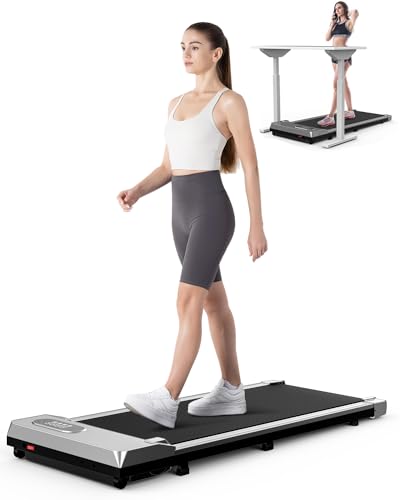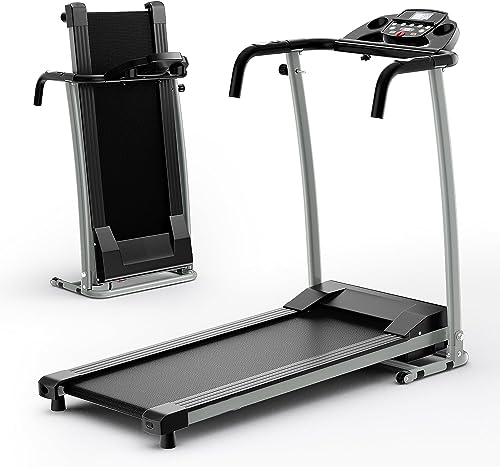Are You Responsible For The Treadmill Electricity Budget? Twelve Top W…
페이지 정보
작성자 Paulina Agosto 댓글 0건 조회 3회 작성일 24-11-10 06:54본문
 Treadmill Electricity
Treadmill Electricity While treadmills don't consume as much power as other appliances like washing machines or air conditioners but their use of electricity can be a significant part of your home's energy bill. It is important to understand the energy use of treadmills to help you make smart decisions regarding your purchase.
While treadmills don't consume as much power as other appliances like washing machines or air conditioners but their use of electricity can be a significant part of your home's energy bill. It is important to understand the energy use of treadmills to help you make smart decisions regarding your purchase.Find the treadmill's wattage ratings in its user manual or on the label. Then multiply the wattage number by the number of hours you use it every week.
Origins
Treadmill electricity is a component of the overall power consumption when you are using fitness equipment. The size of the motor and the speed you train are two elements which determine the amount of energy it draws. By shutting down your treadmill when not exercising, and maintaining it on a regular basis to maintain optimal performance, you can lower the amount of energy your treadmill consumes. You can also cut down on your treadmill's energy consumption by running on an incline instead of flat.
Treadmills are used for both working and leisure. Originally, they were used as a method of punishment for prisoners who were sentenced to hard labor. They would continuously walk on a large hamster wheel to generate power for machines that ground grain or powered water pumps. These early models, while predominantly utilitarian, were free of flaws. For instance, prisoners frequently died from heat stroke or other health issues as a consequence of the gruelling work they did on the machines.
Modern treadmills have evolved from their utilitarian ancestors and now generate energy as they are utilized. Treadmills like the Verde by SportsArt convert the energy you generate by running or walking and store it in batteries. When the battery is fully charged it can be used to power small appliances like a fan or light.
The type of treadmill that you choose will have an impact on the amount of energy it requires. For instance, treadmills designed for high-intensity exercise have larger motors, which require more power to move the belt. The speed of the treadmill and the incline setting will also impact the power consumption of your treadmill. The more intense exercises will require more power, which is why it is crucial to keep track of your treadmill's use to ensure that it is within your budget for utilities.
Can you really generate enough energy from treadmill exercise to power an appliance? It's possible, but not much. A skilled athlete could produce up to 3 HP or 500-600 Watts in electrical terms. This might be enough to power a small electric treadmill for apartment fan or even laptops however it's not enough to run commercial or household facilities.
Motors
If your treadmill is powered by electricity, it makes use of motors to convert electrical energy into kinetic energy to move the belt. The majority of Motorized Vs electric running treadmill Treadmill (Glamorouslengths.Com) treadmills utilize two motors that include a drive motor and an incline-motor. The quality of each will affect your workout experience and longevity, so pay close focus on the specifications for these parts when making your purchase.
The most amplified specification for treadmill motors is horsepower (HP). This measurement indicates the amount of power a treadmill motor can generate at its maximum. It's easy to be attracted by an attractive HP rating, you should consider a better measure: continuous duty (CHP). This is the length of duration that a motor will run at its best without overheating. Treadmills that have a higher CHP rating are typically more durable than those with lower ratings, and will last longer before you need to replace them.
When deciding on what kind of motor to buy take into consideration your intended use and budget. In general, motors that are of higher quality and larger size are more expensive to purchase and operate. However, this extra cost can be offset by saving on your energy bills. If you're thinking of a time-of-use rate plan, that has different rates during the day, it's more important to focus on the treadmill's energy use.
It is essential to not share your home's electrical treadmill power with other appliances that are connected to the same circuit. This could make your treadmill break a circuit breaker and it could damage it. Make sure you have a dedicated outlet and ensure your treadmill is wired correctly.
The motors of your treadmill utilize AC/DC electricity to rotate the crank that drives the belt. The alternating current motors are more expensive, but they provide smoother operation and faster response to changes in speed or anincline. A treadmill that has a better-quality DC motor will also decrease noise and maintenance requirements. If you aren't sure of the kind of motor you want to buy, check the warranty and compare models with similar features.
Electronics
The electronic components of a treadmill control the running of its motor. The controls use potentiometers, switches, and PCB electronic components to regulate the force and speed of the motor. The treadmill can simulate running, walking and jogging exercises. Treadmills that have incline options can also adjust the motor's speed and force to simulate running uphill.
The size of the treadmill's motor and the console settings can all impact the amount of electricity consumed. The treadmill belt will require more power to move if the user is heavier. treadmills with incline levels which simulate running uphill will require more energy than treadmills without this option. Setting the console's settings to higher will increase the energy consumption as well.
In general, treadmills use more energy when users are running more quickly and for longer durations. The treadmill's calorie counter as well as other features may also increase energy consumption.
It is possible to generate enough kinetic energy from walking to power a cell phone however, the process will take longer than charging the phone with a USB cable. The system is compatible with any standard cellphone regardless of operating voltage.
The treadmill owner can reduce the electricity consumption of their treadmill by turning off the machine when it is not being used. They should also look for signs of wear and tear on the machine, which could cause it to use more energy than it needs.
You can also cut down on the energy consumption of your treadmill by operating it at "off-peak hours" which are usually overnight. These are the times when electricity prices are lower. This can save you money, particularly if you are on an electricity plan that charges different rates based on time of the day. Solar panels can also be purchased by homeowners to generate green electricity. This can significantly cut down on dependence on grid power and fluctuating electricity prices. In the long run this could lead to substantial financial savings for the homeowner.
Workouts
You can run, walk or jog indoors on treadmills and ellipticals. This allows you to stay fit even when the conditions aren't the best. These fitness equipment consume electricity to drive their motors and to operate their displays, however the amount they use can differ based on the frequency and how long you exercise. The wattage ratings of the treadmill is listed in the user manual or on its label. Divide the amount by the number of days in the month, and multiply it by the number of hours you use the treadmill in a typical day. This will give you your daily energy consumption in kilowatt hours (kWh). Then multiply the number of kWh used by your utility provider's cost-per-kilowatt-hour rate to figure the total cost of operating your fitness equipment.
The speed and incline setting that you choose can affect the energy consumption of the treadmill. The higher speed you run at will require more power from the treadmill's motor, and using an incline setting simulates uphill running. This also can increase the amount of energy consumed. The amount of energy used by the treadmill is dependent on the user's weight, as the motor must work harder to move the belt when it is heavier.
A well-maintained treadmill will also help reduce the amount of electricity it uses. Check the oiling of the belt regularly to ensure it's properly oiled. Replace damaged or worn bearings in order to prevent excessive wear on the motor. If you're using the treadmill for extended durations, think about upgrading to a model with an energy-efficient drive system.
When you're done exercising, turn off or unplug off your treadmill, if connected. If you own a treadmill with a high power consumption, leaving it plugged in could increase your household's energy cost. You can cut down on unnecessary energy use by using a smart plug or energy-efficient treadmill to automatically shut off your treadmill. If you're looking to cut down on static electric treadmill incline current between your body and the treadmill or elliptical frame put a humidifier in your workout space to increase the relative humidity.
댓글목록
등록된 댓글이 없습니다.